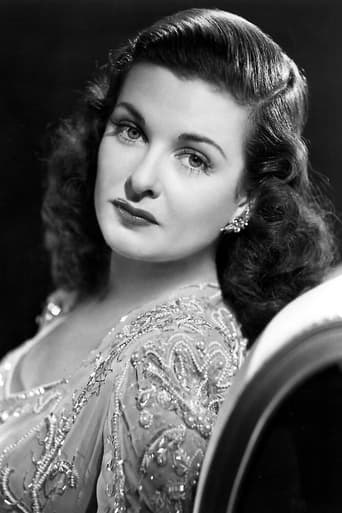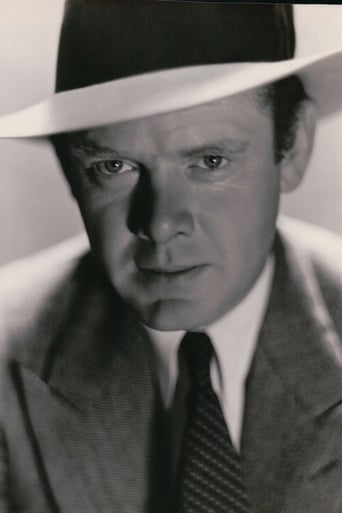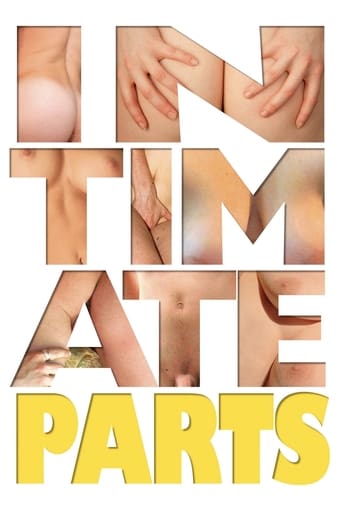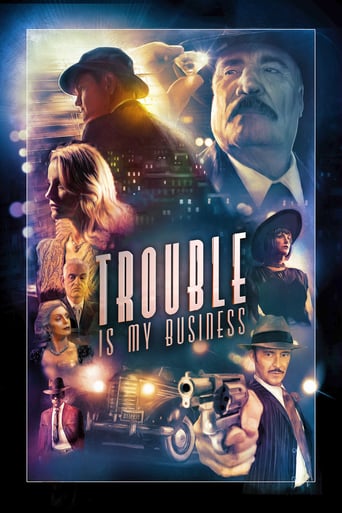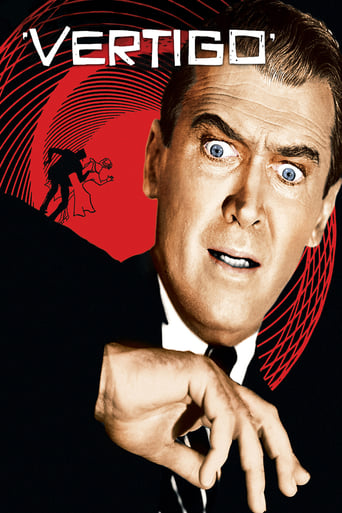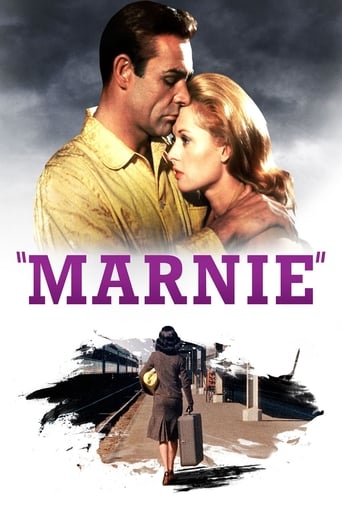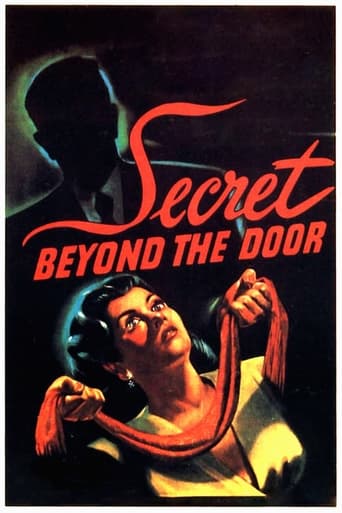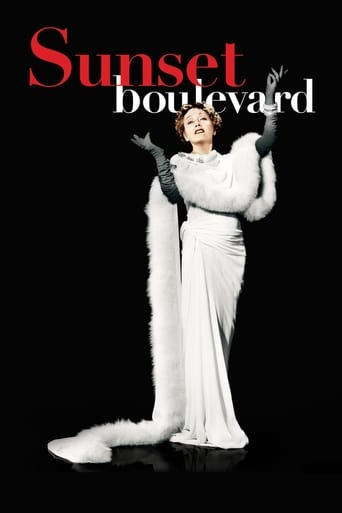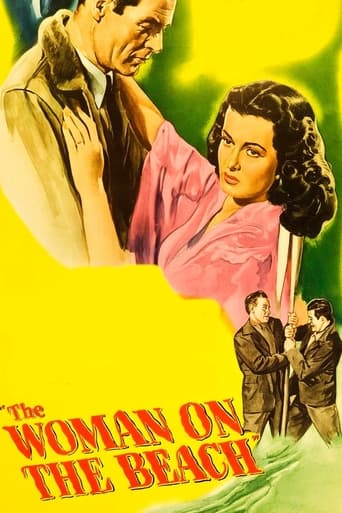
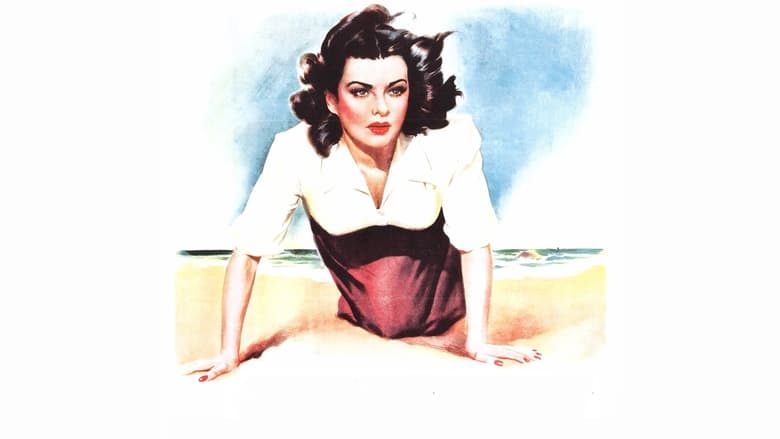
The Woman on the Beach (1947)
A sailor suffering from post-traumatic stress becomes involved with a beautiful and enigmatic seductress married to a blind painter.
Watch Trailer
Cast


Similar titles
Reviews
When a movie has you begging for it to end not even half way through it's pure crap. We've all seen this movie and this characters millions of times, nothing new in it. Don't waste your time.
Tells a fascinating and unsettling true story, and does so well, without pretending to have all the answers.
It’s not bad or unwatchable but despite the amplitude of the spectacle, the end result is underwhelming.
Easily the biggest piece of Right wing non sense propaganda I ever saw.
The Woman on the Beach A coast guard lieutenant gets caught in the middle of a tempestuous marriage. The film has a lot of psychological angles and is anchored by three strong characters with fine performances by Ryan, Bennett and Bickford. However, the story just never takes off and seems to float around without a destination. The emotions bubbling under the surface rarely materialize into compelling plot material and I was fighting boredom a lot of the time. I also found the cinematography uninspired (except for Ryan's surreal nightmare) and the score far too oppressive.6/10
You'd think that a film starring Joan Bennett, Robert Ryan and Charles Bickford would be far better. For one thing, Bickford, already in 1947, looked far too old to play Bennett's blinded painter husband. Ryan is a coast guard officer who falls for Bennett and at the same time suspects that Bickford is feigning his blindness. That would have been a great premise to stick to, but it didn't and the picture may have suffered as a result.Ryan allows Bickford to fall off a rock and the two battle on a raft during a ferocious storm. Amazingly, there are no fatalities, which in itself is ridiculous.When I saw the ending, I thought that they would be bringing in Mrs. Danvers from "Rebecca," and even that scene ended in what many might view as a cop out.
By 1947, Jean Renoir, at least indirectly, wasn't new to the American film noir style. Two years earlier, Fritz Lang had released the first of his two Renoir remakes, 'Scarlet Street (1945),' which was based upon 'La Chienne / The Bitch (1931)' {the second film, 'Human Desire (1954),' was inspired by 'La Bête humaine (1938)'}. 'Scarlet Street' notably starred Joan Bennett in a prominent role, which makes it interesting that, despite allegedly disliking that film, Renoir himself used her in his own Hollywood film noir, 'The Woman on the Beach (1947).' It's a visually-magnificent film, with photography from Leo Tover and Harry Wild (the latter of whom shot 'Murder, My Sweet (1944)' and 'Macao (1952)') that perfectly captures the mystery and eerie calm of the beach-side setting, frequently swathed in gentle clouds of mist that foreshadow the ambiguity and uncertainty of the story that follows. When we first glimpse Joan Bennett on the fog-swathed coast, collecting driftwood at the wreck of a grounded ship, she really does look ghostly and ethereal, a premonition that may or may not be real.Robert Ryan plays Scott, a coastguard who suffers from regular night terrors concerning memories of a war-time naval tragedy, when his ship was presumably torpedoed. His dream sequences are gripping and otherwordly, recalling the excellently surreal work achieved by Renoir in his silent short film, 'The Little Match Girl (1928).' During his nightmares, Scott imagines an underwater romantic liaison, which, before he can get intimate, unexpectedly blows up in his face; this is an apt indication of the events that unfold later in the film. Scott is engaged to marry the pretty Eve (Nan Leslie), but his attention is soon distracted by Peggy (Joan Bennett), the titular "woman on the beach." Peggy is married to Tod (Charles Bickford), a famous blind artist who is still coming to terms with his relatively recent affliction. At just 71 minutes in length, 'Woman on the Beach' feels far too short, the apparent victim of studio interference. Scott is obviously enamoured, and later obsessed, with femme fatale Peggy, in a manner than suggests Walter Neff's fixation with Phyllis Dietrichson, but the motivations behind his actions are inadequately explored and explained.Perhaps as a result of the studio's trimming of scenes, many plot-twists in the film seem somewhat contrived. Scott's extreme determination in proving that Tod is faking blindness feels so incredibly illogical why, indeed, would Tod even consider such a con? Many wonderful scenes are severely hampered by the story's lack of exposition. In the film's most dramatic scene, amid the choppy waters of the Atlantic, Robert Ryan displays a frighteningly convincing rage that borders on pure psychosis, a quality that Nicholas Ray exploited five years later in 'On Dangerous Ground (1952).' However, because Scott's obsession and emotional transformation had previously been explored so sparsely, the sequence feels, above all else, out of context. The performances are nevertheless solid across the board, with Bickford probably the most impressive. Bennett's character is tantalisingly ambiguous: throughout the film, she slowly reveals herself to be nothing but a greedy tramp, though Scott insists on treating her as a tormented victim of abuse. The ending offers little in the way of resolution, reaffirming the sentiment that perhaps this film isn't all there.
After sitting through this film in total bemusement I turned to the eight comments posted here in search of anything that may help me make sense of it. There seems to be a consensus that Renoir suffered a touch of the Orson Welles' inasmuch as a potential masterpiece was butchered by the studio. There may be grounds for asserting the studio did in fact cut the film extensively but I could detect no evidence whatsoever that this was a potential Magnificent Ambersons. I'm an admirer of Renoir but I had to work awfully hard to detect his hand in even one frame of this noir manque. By coincidence I saw it within 24 hours of another noir film set largely out of doors in daylight and made by a Frenchman albeit set in America but Jacques Tourneur's Build My Gallows High is light years ahead of this whilst compared to Renoir over the long haul Tourneur is very much second-string. Like Gallows the protagonist - respectively Robert Mitchum and Robert Ryan - begins his cinematic life betrothed to a wholesome Doris Day substitute but is soon seduced by a femme fatale - Jane Greer and Joan Bennett - but that's about as far as comparison will take us. Unlike Gallows Renoir never permits the noir world to fully intrude and eclipse the healthy environment in which the protagonist is discovered so that we're constantly reminded of 'normal' life even as Ryan is drawn deeper and deeper into the whirlpool surrounding Bennett and her blind painter - a very crude metaphor for impotence - husband Charles Bickford. All three principals give it their best shot but the problem was they never knew which target - thriller, suspenser, drama, melodrama - they were aiming at.


